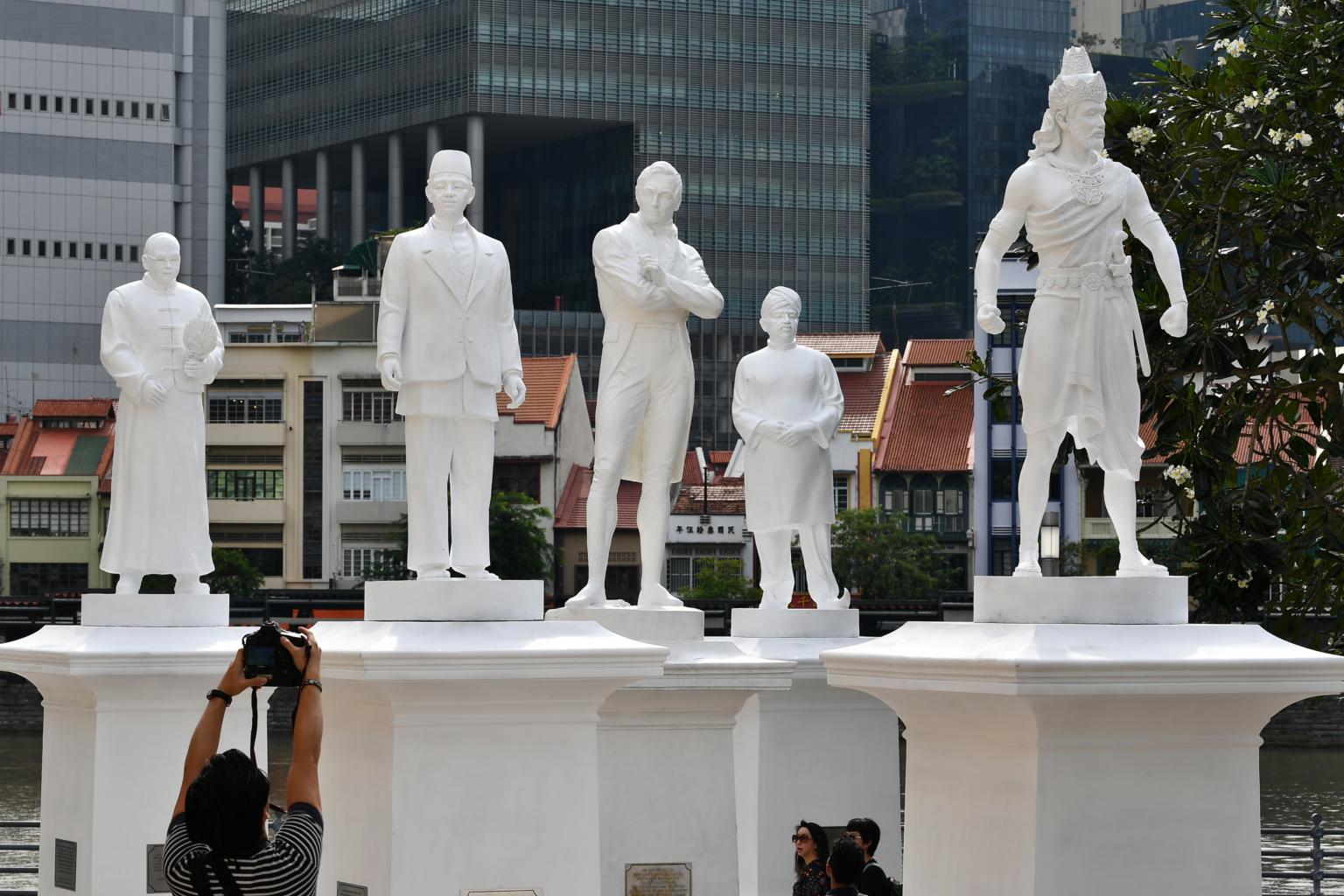Key figures in Singapore's history
Sign up now: Get ST's newsletters delivered to your inbox

Four more statues have risen along the Singapore River next to the iconic one of Sir Stamford Raffles on Jan 4, 2018.
ST PHOTO: LIM YAOHUI
Follow topic:
SANG NILA UTAMA
Sang Nila Utama was a Palembang prince from the Srivijaya ruling house, according to the Sejarah Melayu, or Malay Annals. He is said to have been attracted by the beauty of the white sands on the island of Temasek, landing on its shores in 1299.
The story goes that he had a vision of an animal with a red body, black head and white breast, which he took to be a lion. This good omen led him to establish the kingdom of Singapura, or the Lion City.
Archaeologists have found white sand at the Padang, which is believed to be the same sand that first captivated Sang Nila Utama.
TAN TOCK SENG
Tan Tock Seng, one of Singapore's most renowned philanthropists and pioneers, arrived here in 1819 from Melaka at the age of 21.
Tan started out as a small-business owner, and later became a wealthy merchant who owned properties stretching from the Padang to High Street and Tank Road.
He funded essential public services, including the Chinese Pauper Hospital - the predecessor of today's Tan Tock Seng Hospital. He also rallied other business owners to contribute money for the hospital.
He also became Singapore's first Asian Justice of Peace, and was the biggest donor towards building Thian Hock Keng Temple in Telok Ayer Street.
MUNSHI ABDULLAH
Known as the father of modern Malay literature here, Munshi Abdullah was born in Malacca in 1797 and arrived in 1819 in Singapore, where he worked as secretary and interpreter for Stamford Raffles.
A gifted linguist who mastered Arabic, Tamil, Hindi and Malay, Munshi taught Malay to British and American missionaries. He was the first Malay author to introduce a shortened and more colloquial version of the language in place of classical Malay.
In 1849, his autobiographical book Hikayat Abdullah (The Story Of Abdullah) became one of the first commercially published Malay literary texts. The book offered a unique perspective on the political and cultural developments of the time.
NARAINA PILLAI
Naraina Pillai was a successful entrepreneur and regarded as the de facto leader of the Indian community.
He arrived in Singapore in 1819 from Penang, and became chief clerk at the treasury department, then developed Singapore's first brick company and became the country's first building contractor.
He also traded cotton goods, and his store in Cross Street quickly became the largest cotton business in town.
He was pivotal in the construction of Sri Mariamman Temple, the first Hindu temple in Singapore. It was built in 1827 and served as a shelter for Indian immigrants before they found accommodation.
Linette Lai

